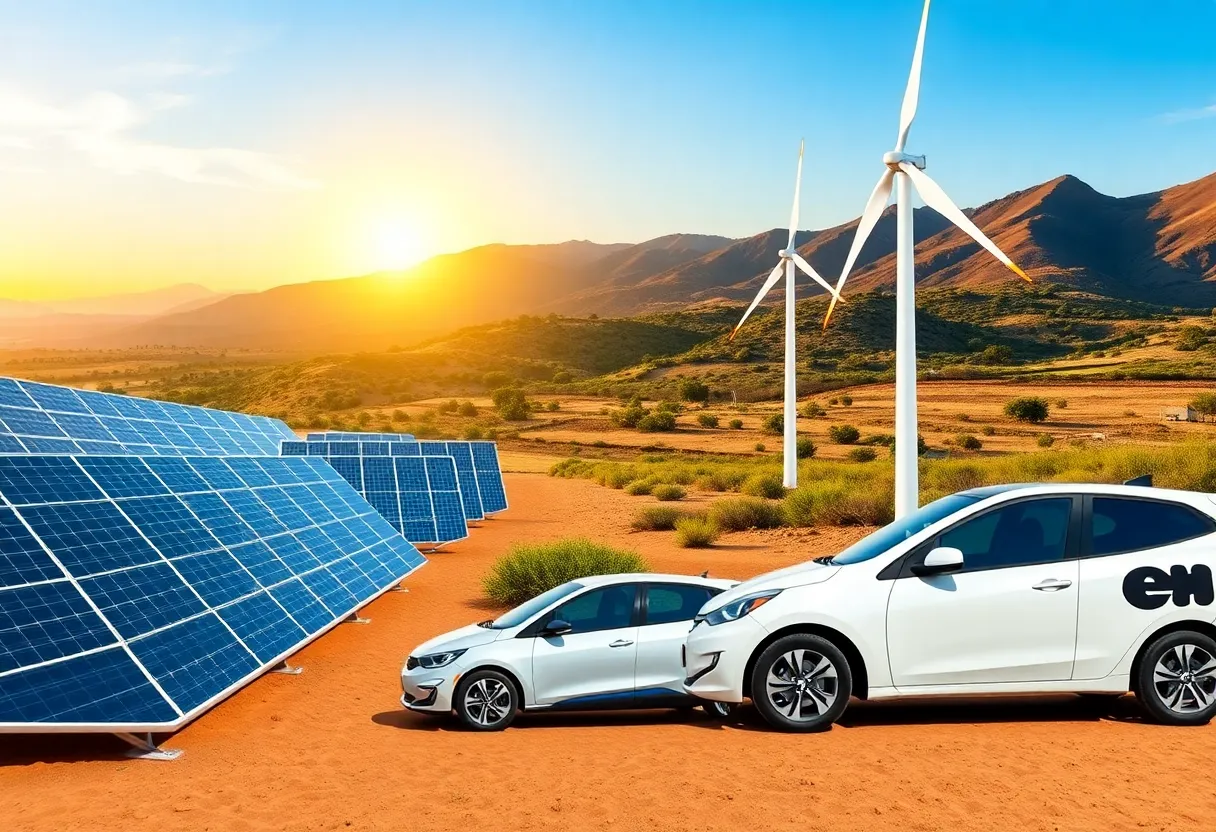News Summary
A recent study reveals that California’s ambitious green energy transition could cost households between $17,398 to $20,182 from 2025 to 2050, amounting to a total of $246.7 billion. The state’s goal of 100% zero-emission vehicles by 2035 raises concerns about a potential 21.2% shortfall in power supply by 2045. Residents face high electricity prices, averaging 30.22 cents per kilowatt-hour, and elevated gasoline prices. As policies push for renewable energy, low- and middle-income families may struggle to cope with the rising costs associated with this transition.
California is facing a significant financial challenge as a new study reveals that households may incur costs ranging from $17,398 to $20,182 due to the state’s ambitious green energy transition plans. These projections span from 2025 to 2050 and indicate a total estimated cost of $246.7 billion for the transition towards renewable energy sources.
The expenses largely stem from the necessary infrastructure investments for solar panels, wind turbines, electric vehicles, and the required decommissioning of fossil fuel plants. California intends to operate 100% zero-emission vehicles (ZEVs) by 2035, a target that underscores the state’s commitment to reducing greenhouse gas emissions.
However, an alarming forecast indicates that California may experience a 21.2% shortfall in daily power demands by 2045. This potential shortfall raises concerns about the reliability of energy supply amidst increased reliance on renewable resources. Furthermore, the state’s electricity prices are already among the highest in the nation, averaging 30.22 cents per kilowatt-hour, nearly double the national average of 15.50 cents. This trend poses a considerable burden on residents, particularly low- and middle-income families who may find it challenging to absorb the rising costs associated with green energy initiatives.
In addition to high electricity rates, California residents are also grappling with elevated gasoline prices, which currently average $4.78 per gallon compared to the national average of $3.16. These figures reflect the broader economic implications of the state’s stringent environmental regulations and ambitious clean energy goals.
The transition to renewable energy has elicited concerns about its uneven impact on various socio-economic groups. Policies intended to promote electric vehicles and renewable energy may disproportionately affect families with tighter budgets, as the initial costs for electric vehicles and the resultant increase in electricity prices further strain financial resources. With the rising demand for energy driven by artificial intelligence and energy-efficient appliances, future energy shortages could lead to further challenges for residents.
Additionally, the state’s aging energy infrastructure has received criticism for its inability to support the rapid expansion of renewable energy generation. Despite efforts to shift power generation towards cleaner alternatives, an estimated 39% of California’s energy still relies on natural gas, highlighting the persistent dependence on fossil fuels.
Residents also contend with drawn-out permitting processes for solar installations, which can inflate costs for individuals looking to invest in renewable energy for their homes. These administrative hurdles further complicate California’s ambitious goals for widespread adoption of solar energy.
Lessons from international examples suggest that aggressive green policies can lead to increased energy prices, raising further questions about California’s approach to energy transition. Recent research has demonstrated that such policies may contribute to economic difficulties, including energy poverty and job losses within traditional energy sectors.
The ongoing rise in utility bills can be partly attributed to high expenditures related to wildfire safety and mitigation efforts, which are significant components of the costs linked to California’s energy transition. In light of these challenges, there have been increasing calls for a more balanced approach to energy policy that prioritizes affordability while ensuring sustainability. Supporters of this balanced strategy argue for the inclusion of diverse energy sources, such as nuclear power, to help maintain economic viability while addressing environmental concerns.
As California continues on its path toward a greener future, the upcoming years will be critical in determining the economic impact of its green energy initiatives on households and the overall stability of its power supply.
Deeper Dive: News & Info About This Topic
- Los Angeles Times: California’s Green Energy Transition
- Wikipedia: California
- Fox News: California’s Green New Scam
- Google Search: California Green Energy
- Fierce Healthcare: Kaiser Permanente’s Renewable Energy Microgrid
- Google Scholar: California Renewable Energy Costs
- Newsweek: California’s Green Dream Faces Reality Check
- Encyclopedia Britannica: California Green Energy
- PR Newswire: Soaring Costs of California’s Green Energy Transition
- Google News: California Green Energy Costs








